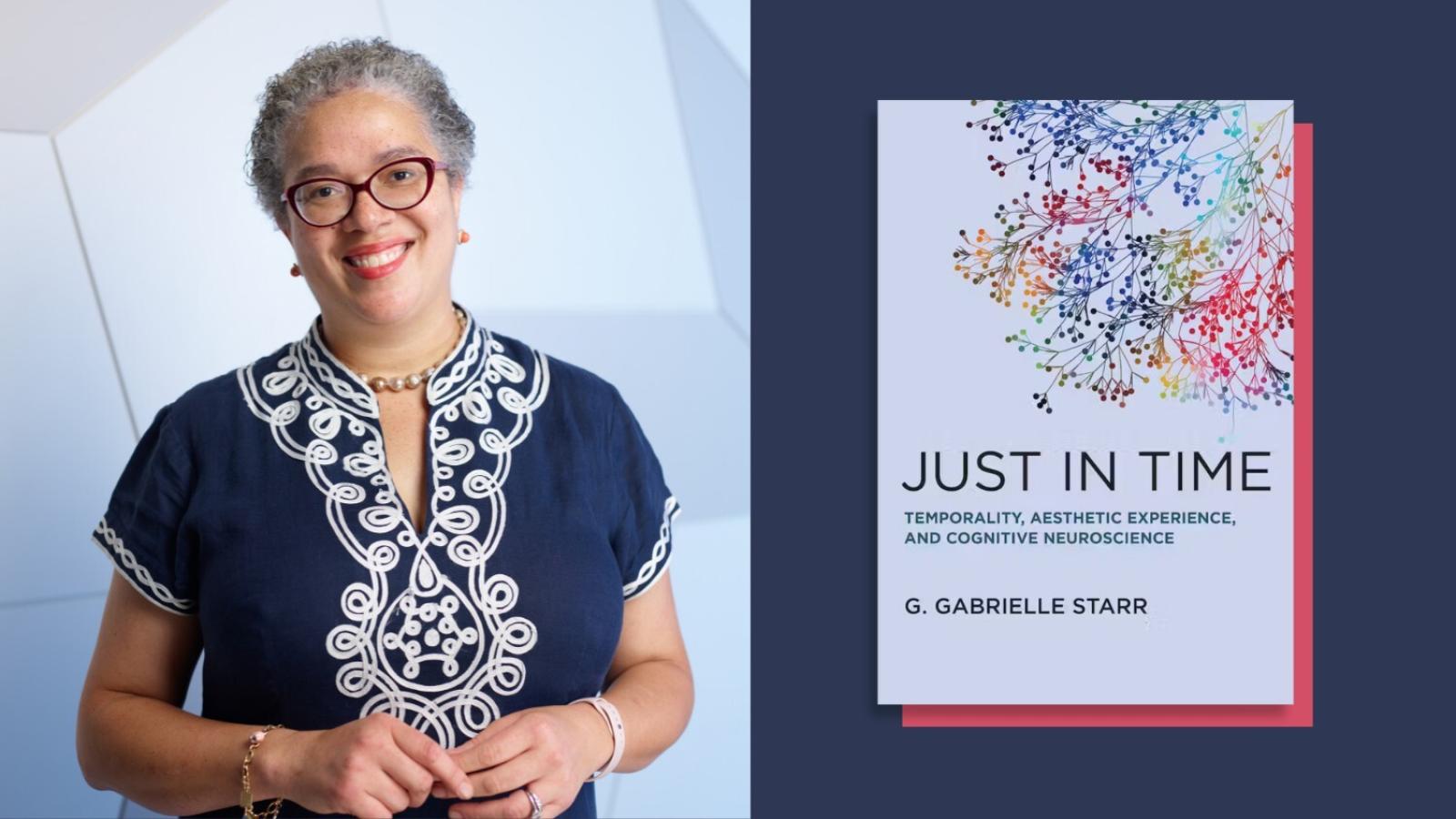Pomona College President G. Gabrielle Starr’s new book, Just in Time: Temporality, Aesthetic Experience, and Cognitive Neuroscience, was published in June by The MIT Press. In it, she explores how the experience of beauty results from neurological and psychological processes in which time is a key element. She recently answered questions about the book and her research.
Beauty is an essential concept in your new book. So is time, as it relates to the experience of beauty. What would you tell someone who doesn’t know much about the field of aesthetics about how beauty exists in time?
Beauty can change how humans see the world, directing our attention to features of the natural world, arts and artifacts, and even ideas that give us opportunities for learning. But the experience of beauty isn’t instantaneous. I use neuroscience to help unpack the stages by which beauty emerges and to help understand how the particular pathway an aesthetic experience takes can shape the time course of emotion, cognition and even memory.
You write that in aesthetic experience, time doesn’t just happen to us, but we take control of time. How does that happen?
People often describe beauty as “arresting”—stopping us in our tracks as we move through the world. But it’s not just that we experience beauty when something in the world outside seems to compel our attention. Powerful aesthetic experiences signal the start of processes that enable people to explore the world more fully. As we do this, we can set what I describe as a “metronome”—our own rhythm of learning—linked to pleasure and to the ability to meet or change the motivations that guide us.
How would life for us be different without art to facilitate interaction with others?
Aesthetic experience is a necessary outcome of the way human beings learn about the world. Because of this, without art, I think human society wouldn’t exist as we know it. Our ability to understand others’ emotions, for example, might be limited to people we know well and with whom we have spent time. We would lose a whole range of the ties that bring and bind us together. Worship would take place without song. Language would have no poetry. Ultimately, though, I think we’d be entirely different organisms. The moment humans discovered ways to change the world around us, and to do so in ways that didn’t simply enable us to survive, the arts were inevitable.
What is “neurocoupling” and how does it factor into the social experience of the arts?
Most neuroimaging focuses on the brain activity of a series of individuals. This has given us detailed knowledge of how human brains function, both on average and for individuals. Neurocoupling, however, is a technique for imaging developed by Uri Hassan and colleagues at Princeton. It enables researchers to explore how social interactions emerge through exploring the brain states underlying different kinds of actions. Social engagements require complex interplay between individuals, where each person not only is thinking, feeling and acting, but is watching others and anticipating their moods, thoughts, feelings and actions. Simultaneous neural imaging can allow us to understand how social behaviors are coordinated, like between a musician and a listener, for example, or two people looking at the same artwork. Because the arts are social in nature—think creator and audience, friends at movies, you name it—this kind of investigation holds promise for a deeper understanding of aesthetic experience than individualized imaging alone.
Does the impact of aesthetic experiences change over the lifespan?
There is a lot to learn about how aesthetic experiences change from infancy to old age, but what we know suggests that we are capable of powerful experiences of beauty throughout our lives. But there are differences, too. Our tastes can be set quite early, especially in music—often by late adolescence. And people remember what they find beautiful, even in the grip of Alzheimer’s or dementia. Brain development also can alter the ways that we engage with aesthetic objects, as we learn more and as we develop mature neural pathways connecting major brain systems. Because aesthetic experience is so deeply connected to learning, however, I suspect that at every stage of brain development, the rewards of aesthetic experience contribute to our happiness, our health and our lives as individuals and as parts of communities.
